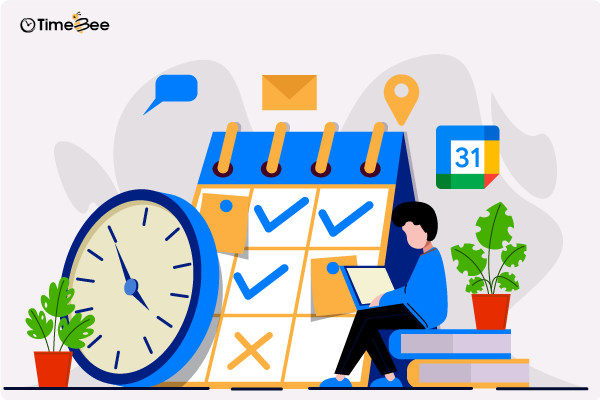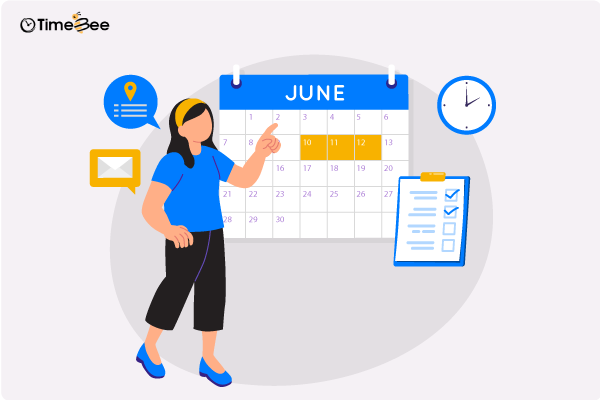Content
Content
When an employee is underperforming, it can be a tricky situation to provide feedback in a way that doesn’t cripple their confidence. Yet, it is a necessary conversation that must be had for the betterment of both the employee and the whole team.
Managers must find a balanced way to nudge employees in the right direction and support their growth in the organization. This can be especially awkward if the employees are clueless about their diminishing performance.
In such situations, a Performance Improvement Plan (PIP) can help logically address the issue. PIPs can help create an individualized, action-oriented roadmap for helping employees who are falling behind their Key Performance Indicators (KPIs).
This article is dedicated to PIPs- how to create and correctly use them to help your struggling employees.
What Is A Performance Improvement Plan?
A performance improvement plan (PIP) is a document detailing where an employee is falling short and what can be done to improve their performance and stay employed.
There may be a lack of job-specific skills or soft skills, such as team spirit and professionalism, that the employee lacks in the PIP. Additionally, a PIP may be carried out to give an extra boost to a talented employee considered suitable for a big promotion.
A PIP is usually drafted by the employee’s direct supervisor and reviewed by HR. It outlines clear expectations for improvement with a set timeframe for achieving them. It also details the potential actions that will be taken if the employee fails to meet the established standards.
When To Use A Performance Improvement Plan?
PIPs are crafted for employees who are operating at a deficit of some form. It doesn’t necessarily mean they’re not working hard enough. Most of the time, their efforts are not targeted in the right direction, so managers create a PIP to bring them back on track.
Hoping for employees to up their game with vague feedback is unrealistic. You need to draft a concrete, step-by-step, and action-oriented plan for them to follow. Later, the same plan can be used to compare their outcomes to measure the success of your program.
Before you start creating a PIP, ask yourself these questions:
- Could this employee’s performance be affecting the overall team’s productivity or morale?
- Has there been a recent shift in the employee’s performance, or have they consistently fallen short of established performance goals?
- Is the employee’s overall contribution till now worth investing more time and training into them?
If you can answer these questions positively, it is wise to help your struggling employee with a PIP.
A PIP should be tailored to address the specific situation of each employee. In instances where a historically strong performer exhibits a sudden decline in meeting deadlines or appears disinterested, a PIP can serve as a targeted tool for identifying and swiftly addressing the underlying reasons.
This approach focuses solely on improving areas needing attention while acknowledging the employee’s past contributions and continued strengths.
How To Create A Performance Improvement Plan?
Here’s a step-by-step guide to help you draft a PIP:
Step 1: Define The Problem
At the first step, It’s crucial to gather concrete evidence of specific performance gaps hindering the employee’s productivity. Stating what is the acceptable performance level and sharing what you’re currently seeing leaves no room for ambiguity.
Include documented examples of missed deadlines, errors in work, or behavioral issues that are holding the whole team back. Focusing solely on facts ensures a factual basis for calling out employees.
A wise idea at this time is to invite your workers for a one-to-one chat and share your concerns before you startle them with a PIP. Collaborating with employees in identifying improvement areas could paint a positive picture of you as a supervisor and the PIP. It could also encourage them to share any issues that are affecting their performance.
Through collaboration, you may encourage employees to take accountability for their output and make it a personal mission to improve it.
Step 2: Create Measurable Objectives
Spell out what the entire PIP aims to achieve, and by when. Share metrics for measuring performance and what is the allowed time frame to achieve them.
A great tip is to use the SMART Goals framework. It ensures your PIP is not a time-wasting activity that won’t garner any real results. Precisely, your PIP goals should be:
- Specific: Clearly define the desired outcome. Use numbers, percentages, or other metrics.
- Measurable: Establish a method to track progress towards the goal e.g. track the number of sales leads generated each week.
- Achievable: Set goals that are challenging yet attainable with dedicated effort and available resources.
- Relevant: Ensure the goals align with the employee’s role, departmental objectives, and the organization’s overall strategy.
- Time-bound: Set a clear deadline for achieving the goal.
Click here to access our free SMART Goals template and learn how to use it.
Step 3: Define The Available Support for Employees
Start by guiding the involved employees on precisely what they need to do to nail their PIP. It could be helpful for them to know that you want them to succeed and stay part of the organization. List all the help you’ll extend to help them achieve their goals, including the available resources, coaching, or training.
At this point, it is wise to leverage teamwork and collaboration. Encourage your team to help out their teammate in PIP and extend support in all ethical ways. Foster two-way communication to provide timely assistance.
Step 4: Draw Up A Schedule For Periodic Check-Ins
Don’t wait till the end of the PIP to check results. Rather, schedule interim check-ins to monitor the progress of the employee. Without monitoring progress, a PIP may be a time-wasting exercise.
Share the important check-in dates with your employee, and clarify what would be measured, and how. Providing timely feedback on their interim performance could be great in straightening out their long-term output. This could also help employees clarify any doubts or share any difficulties they’re facing.
A great way to monitor the performance of PIP employees is by tracking their work. Automated time trackers surveil employees all day and logically distribute their hours between projects and tasks. By setting standards using metrics like quarterly productivity and web & app usage reports, you can share objective observations of employee performance during the PIP phase.
Step 5: State The Consequences Of Failure
At this point, reiterate the consequences or actions to follow in the event of failure to meet improvement standards. However, a well-structured PIP should prioritize improvement over solely focusing on penalties.
Circling back to the desired expectations out of the PIP procedure is a wise way to remind employees to stay on track.
Effective performance assessments should go beyond solely highlighting errors. Recognizing achievements and positive contributions is equally important. This approach outlines a clear path for improvement while acknowledging the employee’s efforts.
Ready to Boost Employee Performance?
Sign Up for TimeBee
Performance Improvement Plan Template: An Example
In our example, we are creating a PIP for Kelly, our social media lead specialist. Kelly has been falling behind her monthly leads targets, not attending scheduled meetings, and has been the least contributor to team projects.
We want to help Kelly overcome all areas of problematic performance in the next 3 months with the help of our details PIP.
| Performance Improvement Plan | ||
| Employee Name | Kelly Jones | |
| Job Title | Social Media Leads Specialist | |
| Manager | Doug Penn | |
| Department | Sales | |
| Date | February 1st 2024 | |
| PIP Timeline | February 1st – May 1st 2024 | |
| Company Expectations | ||
| Generate 20 Facebook leads per month | ||
| Generate 30 Instagram leads per month | ||
| Generate 5 collaboration leads per month | ||
| Consistently meet deadlines | ||
| Attend all scheduled meetings unless on approved leave | ||
| Make measurable contributions to team projects | ||
| Be accessible to clients during designated work hours | ||
| Areas Of Concern | ||
| Problem | Root Cause | Solution |
| Fell short on generating 10 leads from Facebook | Procrastination | Build better task and time management skills |
| Does not return client calls | Awkward social skills | Build confidence. Accompany manager on client meetings to learn the right body language |
| Failed to show up to 2 scheduled meetings | Missed meeting reminders | Use a scheduled reminder tool or interactive calendar app |
| Does not collaborate with teammates during brainstorming sessions | Unsure of where to help out | Improve public speaking and asking team lead to ask direct questions |
| Resources | ||
| Manager will coach you on how to meet and present yourself to clients | ||
| Supervisor will provide templates for writing collaboration emails | ||
| Team members will help you give feedback on your sales pitch | ||
| Follow-up Schedule | ||
| Milestone | Date | |
| 2-week check-up to assess strategy | Feb 14th | |
| 1-month progress meeting | Mar 1st | |
| 6-week supervisor feedback | Mar 15th | |
| 2-month progress meeting | Apr 1st | |
| 10-week leads report | Apr 15th | |
| Final PIP Review & Results | May 1st | |
| Consequences Of No Improvement | ||
| After thoroughly assessing Kelly’s performance after 3 months, if we seek no visible improvement, Kelly may be deemed unfit for the role: either demoted or dismissed. | ||
Best Practices For Carrying Out A Performance Improvement Plan
Here are five tips to make a success out of your PIP
1. Get to the root cause: This involves analyzing their existing skills and performance, and what has been their past performance trend.
Furthermore, assessing their work environment can reveal potential obstacles like workload or resource limitations. Additionally, open communication is crucial during this stage to understand the employee’s perspective on any challenges they might be facing.
2. Ensure employee involvement: Foster a collaborative environment when building a PIP with your employees. Actively involve them in the process to ensure they clearly understand their roles and responsibilities.
Also, they must have an active voice in defining their improvement strategies. Lastly, make sure they’re aware of the outcomes no matter which way the PIP goes.
3. Provide regular feedback: Attaining a successful PIP requires continuous communication and dialogue. Managers must be trained to give constructive feedback and relentlessly coach employees in PIP.
4. Document progress and results: It is important for line and HR managers to regularly document the results of PIP and maintain accurate records. Not only does this serve as proof when discussing results, but it can also help in carrying out future PIPs. You may want to revisit the PIP to seek areas of improvement and make changes.
5. Reward good results: Acknowledging and celebrating achievements throughout an employee’s development journey is useful in boosting their morale. Positive reinforcement may motivate employees to continue their winning streak.
Now that we’ve shared a detailed way to carry out a PIP, let’s see what advantages it offers.
Advantages Of A Performance Improvement Plan
While PIPs are carried out to elevate specific performance areas, their impact be far-reaching:
- Saves Time And Money
Firing underperforming employees may seem quick and easy but hiring new people costs considerable time and money. Investing in the growth and development of current employees fosters a more productive and stable work environment, along with savings in recruitment and training costs.
- Motivates Employees
Managerial involvement in setting performance goals fosters employee engagement. This collaborative approach instills a sense of ownership in their work, leading to improved performance and increased job satisfaction.
- Improves Employee Skills
Unidentified skill gaps can hinder employee performance. Implementing a PIP can proactively address these knowledge deficiencies. A PIP can establish an effective learning roadmap by identifying specific training needs and equipping employees with the necessary skills to excel.
- Improves Corporate Relationships
PIPs can foster crucial dialogue between managers and employees. Open and approachable supervisors can leverage PIPs to cultivate honest and transparent bonds with their juniors. It may help establish clear expectations, identify areas for development, and encourage employee engagement.
- Higher Employee Retention
PIPs can be a valuable tool for employee development. When presented with a positive and strategic approach, PIPs demonstrate an employer’s commitment to supporting struggling employees and effectively guiding them toward success. Employees who recognize their management’s commitment to developing and growing them, derive greater job satisfaction and are less likely to switch jobs.
Challenges Of A Performance Improvement Plan
A PIP has many benefits, but that doesn’t hide the fact that it comes with its challenges.
- PIPs Include Hard Conversations
Creating a PIP and handing it over to the concerned employee hardly ever works. Managers need to have transparent, raw conversations with employees to explain the intent of PIP. more awkward can be communicating the consequences for failure to meet expected standards.
No matter how nicely you put it, PIP conversations can get complicated quickly and often make it difficult to exchange feedback.
- Can Be Time-Consuming
PIPs are usually a time-consuming process. From drafting a plan to tracking progress, the whole process typically takes months. If the employee fails to show improvement, it may seem like a lot of wasted time and effort.
- PIPs Can Be Misinterpreted
While a clearly outlined PIP addresses areas for improvement or sets goals for career advancement, there’s a possibility that employees might misinterpret it as a precursor to termination. Often employees fall into depression reading PIP as a sign of dismissal, rather than working to improve themselves.
Conclusion
PIPs can function as a powerful development tool, empowering employees to refine their skills and elevate their work performance. This structured approach provides a clear roadmap for growth, fostering a sense of achievement and progress.
Performance improvement plans can be valuable instruments, but only when implemented effectively and in suitable situations. The key to harvesting the most out of PIP is to focus on how it can contribute to career growth for employees, and less on the looming threat of dismissal.
The human resource manager or rep can play a mediator’s role to bridge the gap between the supervisor or manager and employees during the PIP process. This can streamline processes to align with the organization’s strategic goals.
Enhance Your PIP Strategy with TimeBee
Start Your Free Trial Today
Similar Reading



